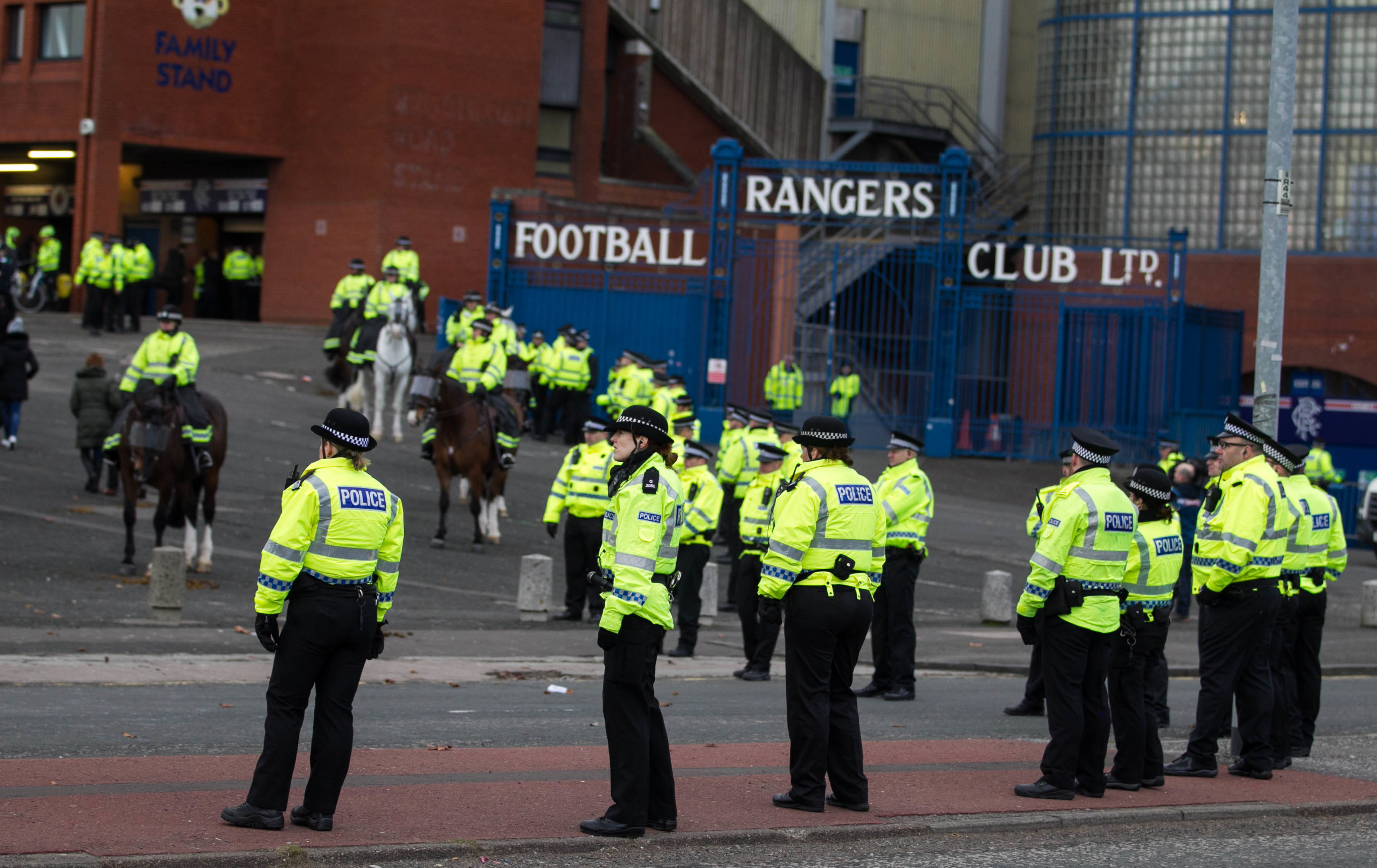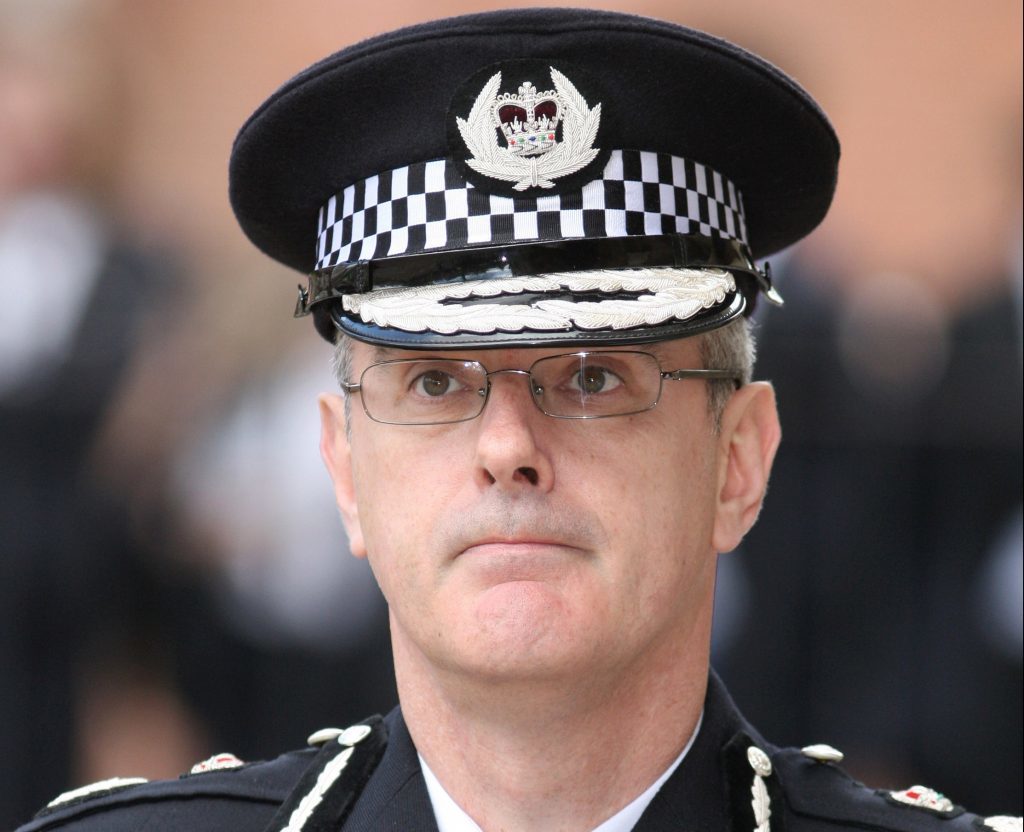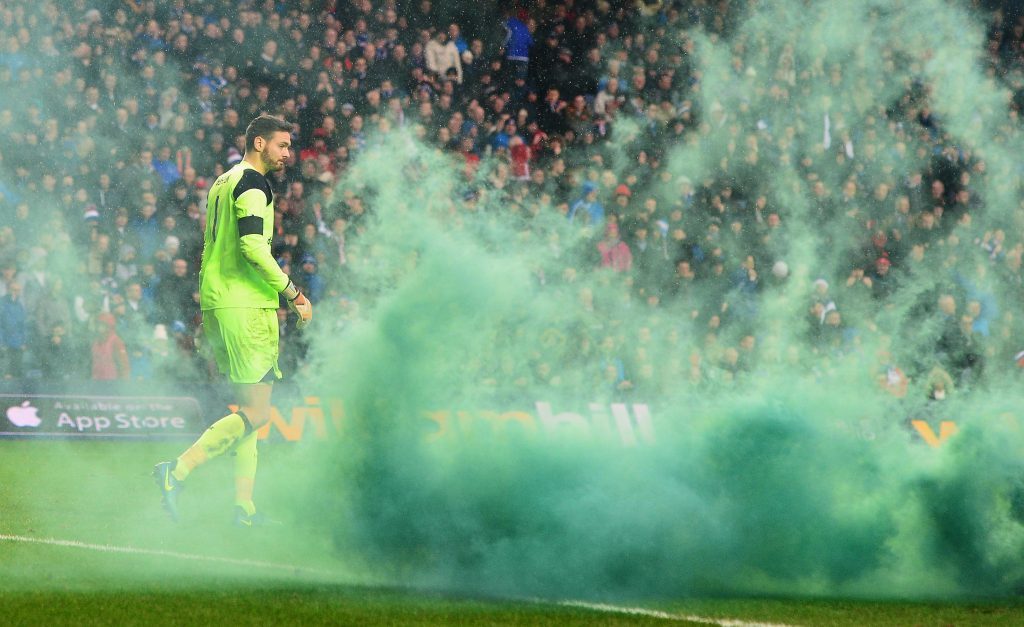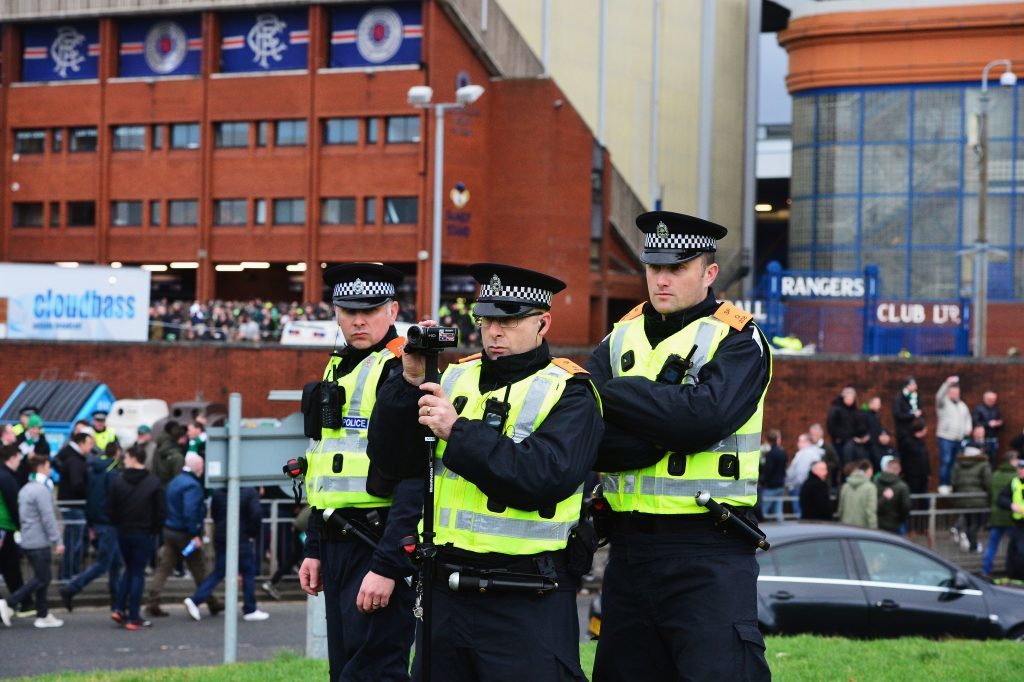
POLICE staged a massive security operation to prevent Old Firm violence marring Hogmanay – after the force’s chief put his reputation on the line over the controversial kick-off time.
Officers threw a ring of steel around Ibrox Stadium in Glasgow ahead of a kick-off which sparked massive controversy before a ball was even kicked.
The timing of the fixture, at the busiest time of year for the emergency services, sparked widespread criticism.
But Chief Constable Phil Gormley made a dramatic intervention, saying he would shoulder the responsibility if the controversial kick-off time backfired.
“Ultimately, I’m accountable for everything Police Scotland does,” Mr Gormley said.
Mr Gormley and his senior officers insisted the event and its aftermath could be policed in a way that would keep fans and the public safe.
But it was unclear last night if the decision to let the game go ahead at 12.15pm had paid off.
As The Sunday Post went to press just three arrests had been made, while the emergency services and communities across the country held their breath, hoping fallout from the Old Firm battle would remain at a minimum.
Tension was high around the stadium before the game, with both sets of fans being closely monitored by an army of police.
Mounted officers lined the concourse outside the ground, shepherding Celtic supporters into the Broomloan Road Stand, while a long line of officers ensured rival fans were kept on separate sides of the road on approaches to the stadium.
Dozens of riot vans were also parked close to the ground, packed with specialist crowd control officers.
Even the Police Scotland force chaplain was on hand, making sure rain-lashed officers were supplied with Tunnock’s Caramel Wafers.
A minute’s silence to honour the 1971 Ibrox Stadium Disaster, in which 66 fans died, was largely observed by the 50,126 fans inside the ground.
However, one or two people yelled out in an apparent attempt to disrupt the tribute, before they were quickly shushed down.
There was another flashpoint, during the 33rd minute, when a green flare was hurled on to the pitch.
At the final whistle the Celtic squad rushed to their fans to celebrate their 2-1 win, while Rangers fans streamed out of the ground and into foul weather conditions.
Outside the stadium, jubilant Celtic fans cheered “Happy New Year”, as they were funnelled by police towards Govan subway station.
A temporary wall was also built at the edge of the Rangers stands so supporters couldn’t see Celtic fans as they were leaving.
Police riot vans and support cars were moved to form a funnel for Celtic fans to walk through on their way home.
Angry Rangers fans started shouting at police when officers stopped supporters from getting to their cars because they were parked too close to Celtic fans.
After the game Police Scotland Chief Superintendent Brian McInulty said: “The overwhelming majority of supporters of both teams enjoyed the event and followed the advice which had been provided before the game.
“A well-planned policing operation was carried out with a wide range of partners to ensure the safety and security of all those attending the match.”
Before the clash, matchday commander Superintendent Alan Murray met supporter groups and ordered them to leave controversial banners and inflammatory props at home in an effort to prevent trouble.
Both sides of the divide were also warned a zero tolerance approach would be taken towards hate songs and provocative flag displays.
The players were also reminded of their responsibilities and the effect their behaviour could have on the terraces, as well as being advised on “personal safety”.
The game was initially earmarked for Hogmanay before the season started in June, but when Sky TV asked police for a move to January 1, top brass said the alternative was “absolutely unsuitable”.
A restricted “briefing paper”, released under freedom of information laws, revealed the force’s Greater Glasgow division then “suggested” a noon kick-off on Hogmanay.
It went on to list nine reasons to support the early Saturday kick-off, including supporters leaving Glasgow early to get ready for the bells and extra officers already scheduled to be working in potential trouble spots.
However, there has remained significant scepticism about the timing. Paul Waterson, chief executive of the Scottish Licensed Trade Association, said he expected last night to be “very difficult” for pubs in the wake of the game and its timing.
“We’ve been warning about this fixture since September,” Mr Waterson said.
“We never thought it should be held on Hogmanay and we haven’t changed our minds.”

Enjoy the convenience of having The Sunday Post delivered as a digital ePaper straight to your smartphone, tablet or computer.
Subscribe for only £5.49 a month and enjoy all the benefits of the printed paper as a digital replica.
Subscribe

